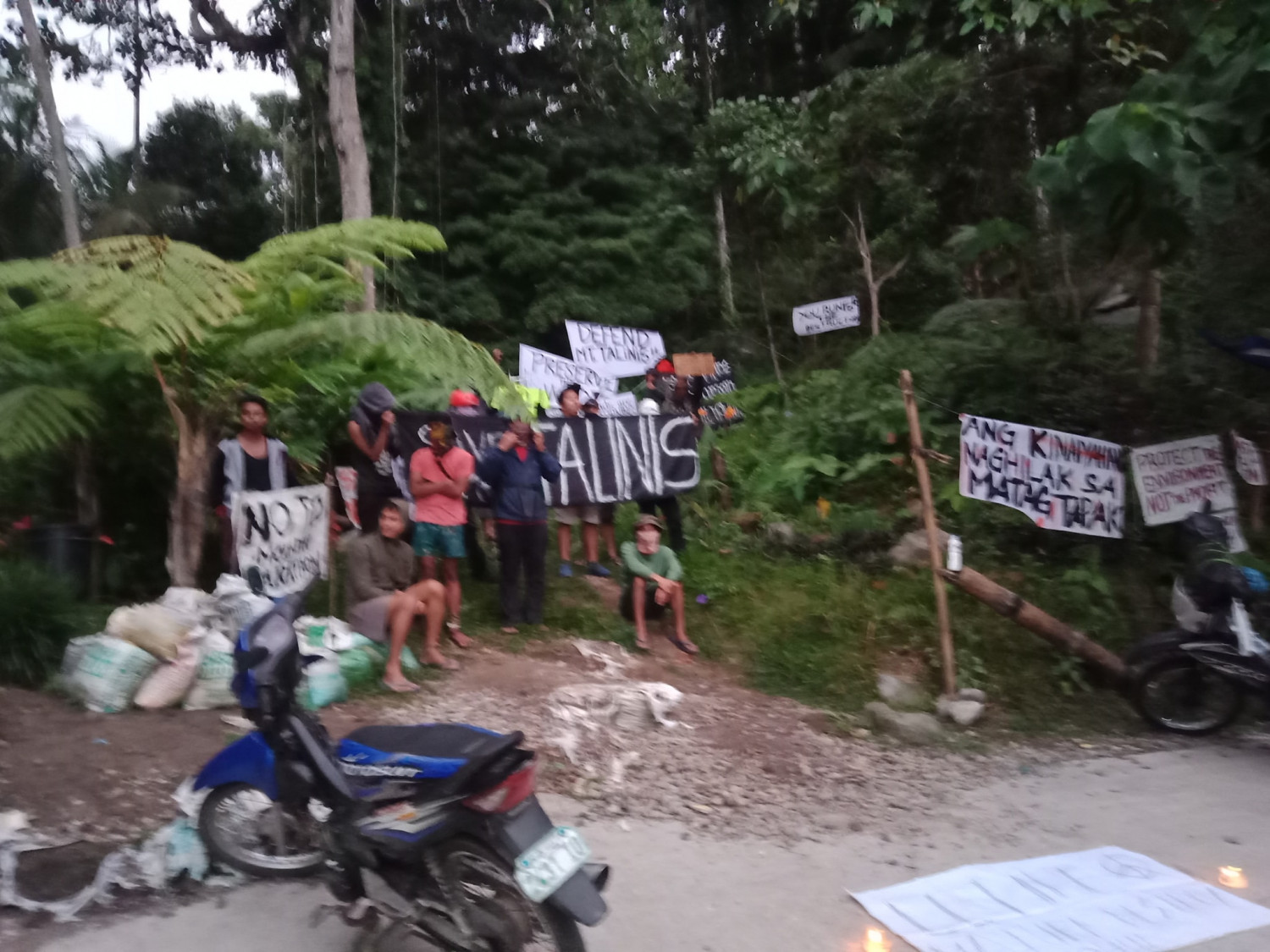
by DGR News Service | Nov 15, 2019 | Human Supremacy, Obstruction & Occupation
Editors note: this piece comes from allies in the Arkipelago (decolonized term for the Philippines) who are engaged in ecological struggles and wish to highlight the detrimental effects of mass culture in outdoor recreation.
By Aidalyn IAmMoutara
This is what happened during the #TalinisUltramarathon this morning, October 6. Protesters blocked the entrance of Apolong trail when two truckloads (dumptruck) of participants started to arrived for the 25k and 17k category since other categories have started the previous night.
 The blockade lasted for two hours. The blocking group is not an organization nor any entity. They were individuals who believed that a single race event composing of 333 runners going up in a span of less than 24 hours is too much for Mt. Talinis.
The blockade lasted for two hours. The blocking group is not an organization nor any entity. They were individuals who believed that a single race event composing of 333 runners going up in a span of less than 24 hours is too much for Mt. Talinis.
However, the race continued after a peaceful resolution with the blocking protesters.
Meanwhile on the other side, LGU Dauin was also blocking their jurisdiction (trails inside Dauin) since the organizers fail to coordinate with them for the said race event.
I believe this is the first of its kind. A race event met with protest. This sends out a powerful message to everyone, that we are serious in our convictions to protect Mt. Talinis Range and uphold the rights of the locals.
Events like this should benefit the host communities and not the other way around.
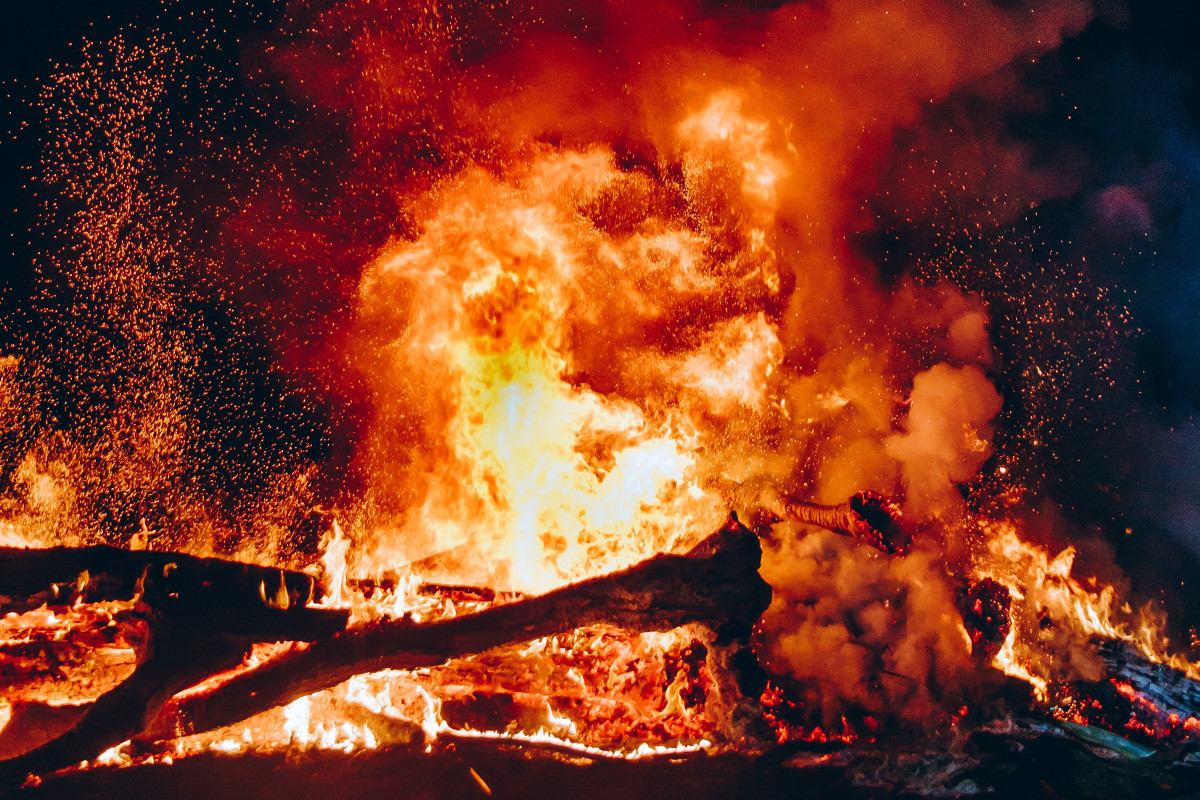
by DGR News Service | Sep 17, 2019 | Agriculture, Biodiversity & Habitat Destruction
by Liam Campbell
In 1997, forest fires in Indonesia grew so large that they accounted for 40% of global emissions during that period. The Borneo rainforest is the most ancient in the world, having taken 120 million years to evolve into its current state of rich diversity. Indonesia is also home to some of the world’s largest tropic peat bogs, deep and vast stockpiles of carbon which have formed over millennia. When these peat bogs ignite they are almost impossible to extinguish because they burn deeply into the Earth and smoulder for weeks or even months, and they can also release millions of years worth of stored carbon into the atmosphere very suddenly. Although seasonal fires are common in the Borneo, climate collapse has made the rainforest more susceptible, and the magnitude of this year’s fires are already unfathomable.
Many of the fires we’re seeing right now are caused by exploitative agriculturalists who are burning the rainforest to open land up for human crops and livestock. In doing so, they are destroying 120 million years of evolution and rapidly annihilating one of the Earth’s most diverse and ancient living ecosystems. Although Indonesia claims to be doing “everything in their power” to extinguish the fires, they are not doing nearly enough to prevent them from happening in the first place. Only about 200 suspects have been arrested in relation to the arsons, and it is likely that many of them will be released without charges or consequences. It is understandable that individual farmers may be tempted by the prospect of opening more land for profitable exploitation, but the act of burning such an ancient ecosystem is among the worst crimes a human can commit; it not only endangers the rest of the planet’s climate, it destroys one of the most ancient living systems on this planet.
Most of the fires were started by palm oil plantations, which are often owned by large corporations. Officials estimate that about 80% of the fires were set intentionally and they now number in the thousands, with 2,900 especially bad hot spots. In all, only about two dozen palm oil plantations have been temporarily shut down in connection to arsons, they are primarily owned by Malaysian and Singaporean companies. These companies are unlikely to face significant charges or repercussions, and will likely return to increasingly profitable business after paying fines.
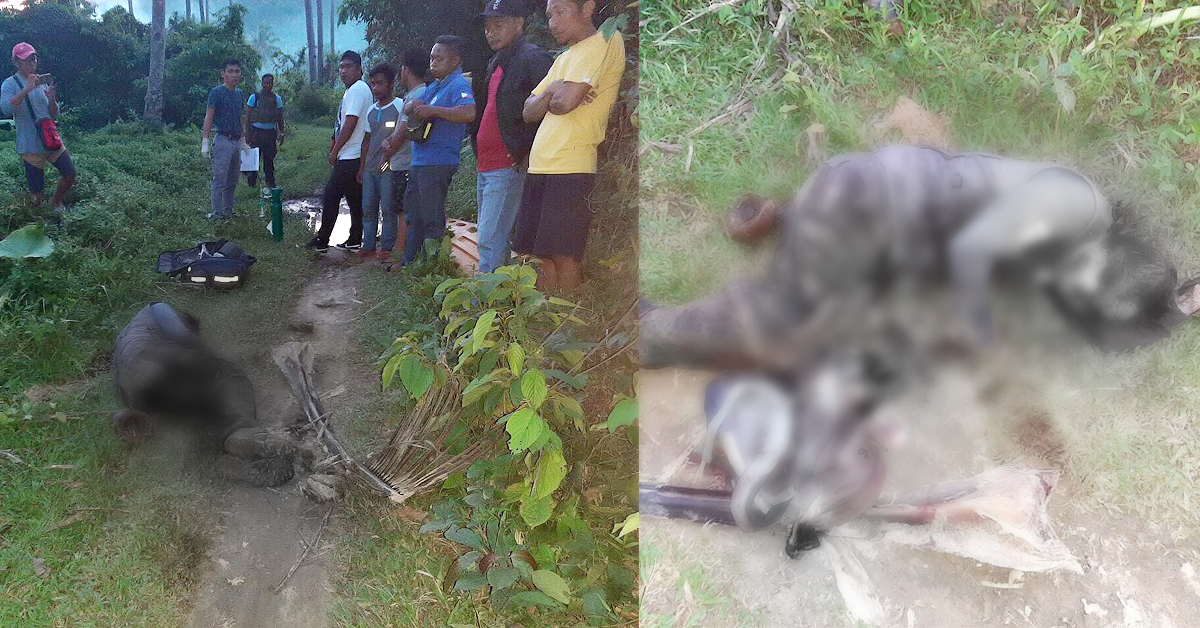
by DGR News Service | Sep 10, 2019 | Biodiversity & Habitat Destruction, Human Supremacy
Image: PRO MIMAROPA
by Liam Campbell
Forest ranger Bienvinido “Toto” Veguilla, Jr. was murdered last week while attempting to stop illegal loggers from ransacking a section of forest in the Philippines. Veguilla was on a routine patrol in the Sitio Kinawagan, Barangay Pasadeña region when he and fellow rangers discovered a group of illegal loggers using a chainsaw and other equipment to destroy the ecosystem for profit. After confiscating their equipment Veguilla and his team departed for their station, but were followed by the illegal loggers and eventually attacked. Unfortunately, Veguilla was unable to escape and was hacked to death by approximately six men.
Veguilla’s murder is a great loss to conservation efforts in the Philippines; he was known as one of the most diligent, hardworking, and courageous members of the Department of Environment and Natural Resources (DENR). He is not the first ranger to be murdered — in 2017, captain Ruben Arzaga was also murdered by illegal loggers in retaliation for his conservation efforts.
These brave individuals and their colleagues risk their lives on a daily basis to protect Earth’s dwindling ecosystems against destruction, often facing death threats and severe retaliation. Sometimes it is easy for environmental activists in priveleged countries to lose sight of the brutal realities facing their comrades in other parts of the world. Next time you hear someone moralizing about the virtues or necessity of pacifism, remember that those notions are an extreme luxury and that the individuals who preach those sermons are generally far removed from risking life or limb.
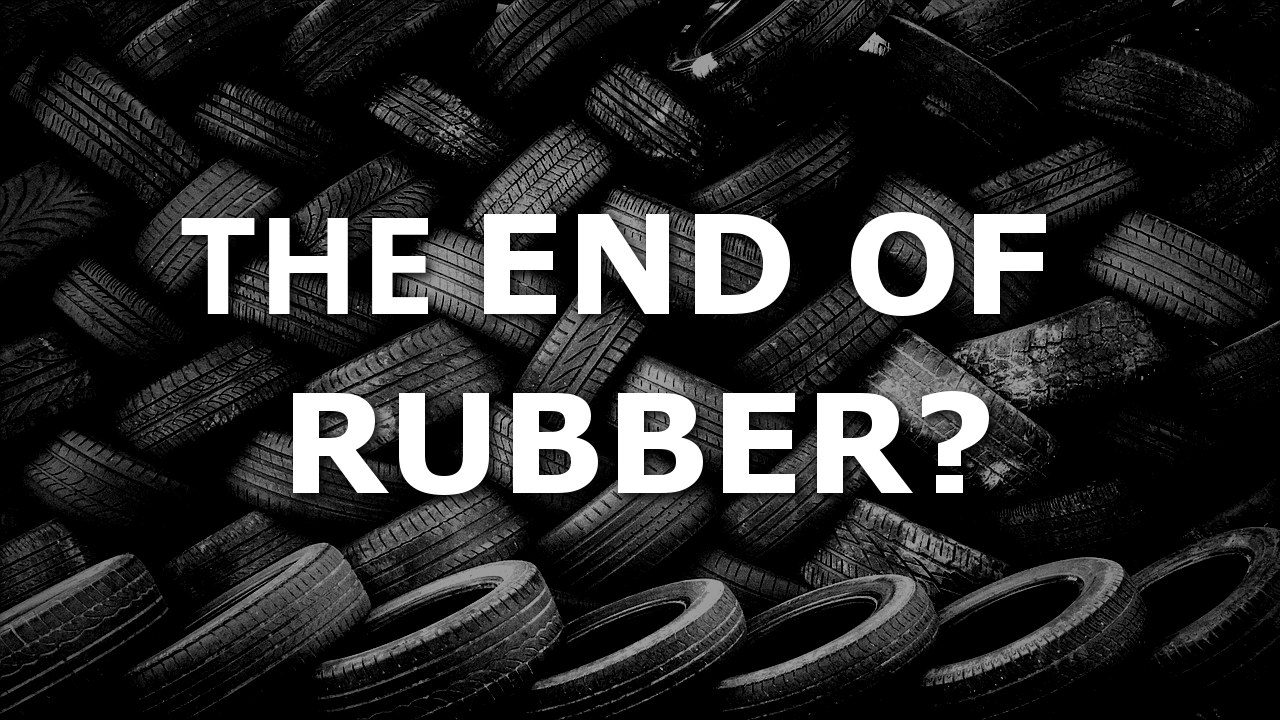
by DGR News Service | Jul 25, 2019 | Agriculture, Direct Action, Property & Material Destruction
Editor’s note: large sections of this article are inspired by Without Rubber, the Machines Stop by Stop Fossil Fuels. Deep Green Resistance does not endorse their organization or their analysis but it’s worth reading.
by Liam Campbell
It’s easy to take rubber for granted. Without it, most of the world’s vehicles would literally grind to a halt, airplanes would eventually be grounded, and most of the world’s industrial factories would cease to be profitable. When someone mentions rubber people think of tires, but open up a car and you’ll find a staggering number of components require the substance: seals, hoses, shock absorbers, wiring, and interiors. If you swim farther down the supply chain you’ll discover that the manufacturing factories that create vehicles also need vast quantities of rubber to operate their own machinery; the same is true of the processing plants that refine raw materials for the factories, and so on all the way down the supply chain.
About half of all rubber comes from trees, and over 90% of natural rubber comes from Asia. The three largest producers are Thailand, Indonesia, and Malaysia; these few countries account for nearly 75% of all natural rubber production. The Americas used to be the world’s largest producer of rubber, until a highly resilient fungus called Microcyclus ulei annihilated the entire American industry.
In Never Out of Season: How Having the Food We Want When We Want It Threatens Our Food Supply and Our Future, Rob Dunn explains:
“Leaf blight will arrive in Asia at some point. How will it come? The spores of the fungus are thin and so don’t do well on extended travel, such as on boats, but they’d do fine on a plane. […] As a 2012 study notes, ‘The pathogen can be easily isolated from infected rubber trees…and transported undetected across borders,’ which is to say that the intentional destruction of the majority of the world’s rubber supply would be easy […] It would be easy because the trees are planted densely; because most of the plantations are relatively close together; because the trees are genetically very similar to each other. It would be easy because the trees in Malaysia have not been selected for resistance; they have been selected for productivity. Planters chose trees with lots of latex, favoring short-term benefit over long-term security.
Scholars express concern about whether terrorists might have the technology necessary to spread leaf blight to Asia. Do they have the specialized knowledge necessary to transport and propagate fungal spores, the specialized knowledge necessary to destroy the world’s supply of rubber? Of course they do, because all it would really take is a pocket full of infected leaves.
In other words, a single person could severely cripple industrial civilization by simply booking a few flights, carrying a few infected leaves, and going for a walk in among the trees. Soon after, Asia’s rubber plantations would suffer the same fate as their counterparts in the Americas, the cost of rubber would skyrocket, and industrial civilization would be dealt a crippling blow.
The other half of global rubber is derived from petroleum, but synthetic rubber remains significantly inferior to natural rubber. The increased cost and reduced availability would seriously interfere with industrial activities making personal vehicles much more expensive, hindering airlines, and likely reducing global fossil fuel use. More critically, aircraft tires and heavy industrial vehicle tires require almost 100% natural rubber, meaning those vehicles would become extremely difficult to maintain if Microcyclus ulei found its way to Asia.
We are indoctrinated to believe that individuals are powerless, and that industrialized civilization is an invincible Goliath. None of that is true. When systems become large and complex, they also become fragile due to having so many interdependent systems; this makes them susceptible to cascading failures. The stunning reality is that a determined 80-year-old grandmother could take down vast amounts of industrialized civilization by simply booking a holiday that included stops in the Americas and Asia, and collecting a few leaves along the way.
If you found this content interesting or useful, consider making a small donation to Deep Green Resistance. We are entirely supported by grassroots individuals like you: https://deepgreenresistance.org/en/support-us/donate-to-deep-green-resistance
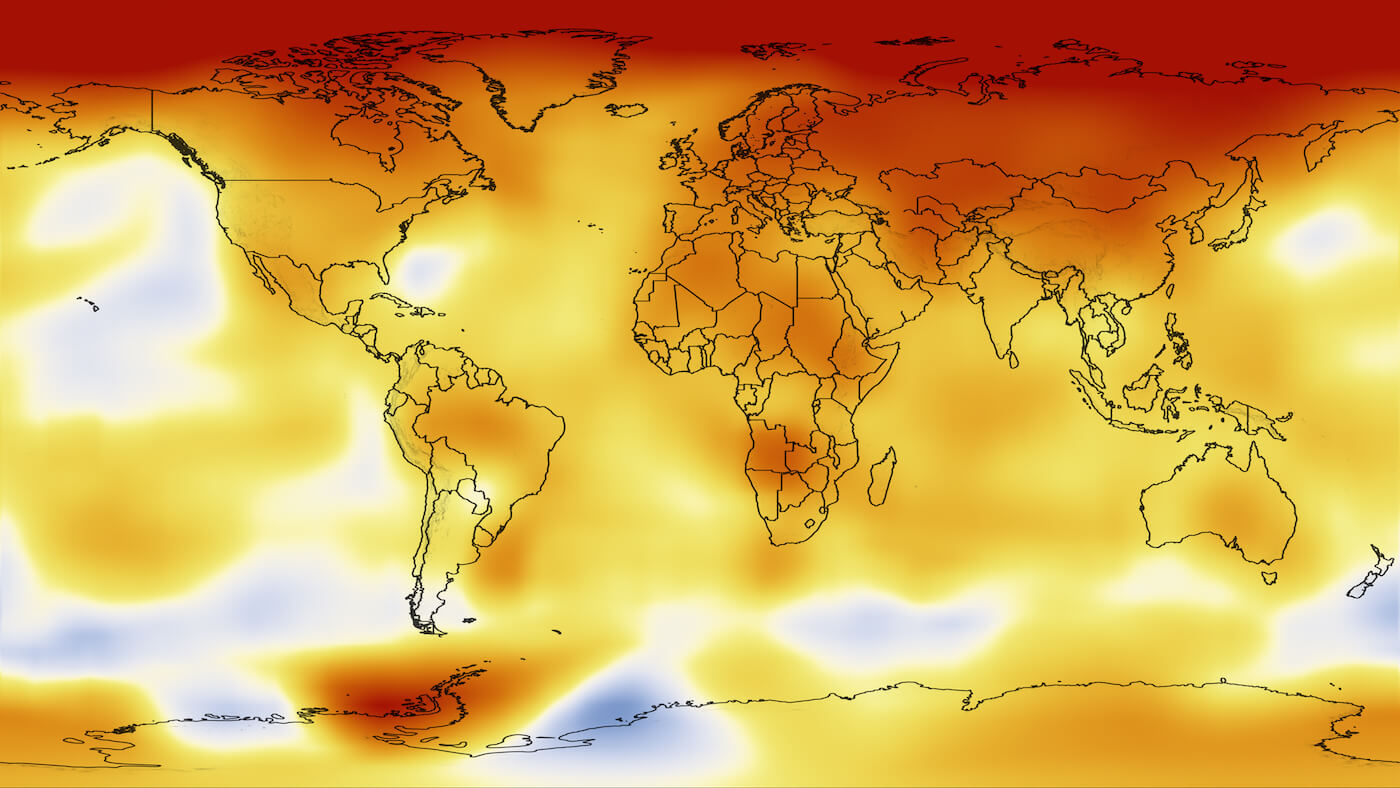
by DGR News Service | Jul 11, 2019 | Climate Change
Editor’s note: Anyone who is paying attention knows that global climate breakdown is accelerating faster than the worst IPCC predictions. Still, emissions continue to rise, setting records year-after-year. There is no evidence that governments, civil society, or corporations are able to address this in any meaningful way. In fact, all the evidence shows the opposite. Drastic times call for drastic measures. We at Deep Green Resistance call for “decisive ecological warfare” to shut down the global fossil fuel economy by any means necessary. We do not advocate this lightly. We fear this may be the only realistic means of stopping climate chaos.
Image via NASA/GISS
Climate Chaos Headlines
June 2019 Was Hottest Ever
“Last month was the hottest June ever recorded, the EU‘s satellite agency has announced.” — full story at The Independent
Antarctic Melting Accelerates
A swath of Antarctica’s sea ice larger than four times the size of France has melted since 2014, AFP reported Tuesday.
The rapid decline, revealed in a study of satellite data published by the Proceedings of the National Academy of Sciences, marks a stunning reversal for the South Pole: Between 1979 and 2014, its sea ice was actually expanding. Then, it lost 2.1 million square kilometers (approximately 810,815 square miles) in three years, falling from 12.8 million square kilometers (approximately 4.9 million square miles) to 10.7 million square kilometers (approximately 4.1 million square miles).
“It went from its 40-year high in 2014, all the way down in 2017 to its 40-year low,” study author and NASA Goddard Space Flight Center climatologist Claire Parkinson told AFP.
— Full story at EcoWatch
India Experiencing Record-Setting Heat
“India has increasingly suffered from extreme heat in recent years. 2018 was the country’s sixth hottest year on record, and 11 of its 15 warmest years have occurred since 2004, The Independent reported. The capital of New Delhi broke its all-time record Monday with a high of 48 degrees Celsius, according to The Times of India.”
— Full story at EcoWatch
France Records Hottest Temperature Ever in European heat wave
Large portions of Europe were hit by intense heat waves over the past week. Germany, Poland and the Czech Republic all experienced their hottest-ever temperatures for the month of June. France recorded its hottest day ever on Friday, reaching a high of 45.9 degrees Celsius (115 Fahrenheit) at the town of Gallargues-le-Montueux near Montpellier, in the southern Gard region, making it temporarily warmer than California’s notoriously hot Death Valley.
— Full story at Pressenza
Alaska Breaks All-Time High Temperature Records
“Alaska had its warmest March on record — in some places 20 degrees above normal. Once all the data is tabulated, it is likely to be the second-warmest June on record.”
— Full story at The New York Times

 The blockade lasted for two hours. The blocking group is not an organization nor any entity. They were individuals who believed that a single race event composing of 333 runners going up in a span of less than 24 hours is too much for Mt. Talinis.
The blockade lasted for two hours. The blocking group is not an organization nor any entity. They were individuals who believed that a single race event composing of 333 runners going up in a span of less than 24 hours is too much for Mt. Talinis.



